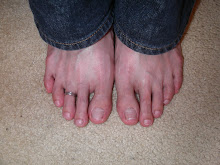Collingwood thinks that there is confusion between what people today call art and craft. Through the years, a lot of works have been loosely classified under the category of Art. However, Collingwood seeks to differentiate art proper from crafts by highlighting the six characteristics of what a craft is. 1. Craft necessarily involves actions that are considered means and those that are ends in themselves. By the term “means”, Collingwood seems to describe it as the actions that are involved in a process; it does not apply strictly to the physical objects that are involved in the transformation process. This process or procedure that constitutes the means will cease to exist once the end has been achieved. 2. Craft involves a distinction between planning and execution. A craftsman must already have the end result clearly in mind before he sets off with the production process. This is important because if there were no end result to begin with, the production of the product can be considered nothing more than an accident. 3. In the planning stage, the end result is first thought out before the means are determined; but in the execution stage, the means are accomplished first, before the end materialises. 4. There is a distinct difference between the raw material, which can often be found ready made, and the finished product. 5. The matter is identical in both the raw material and the finished product but the form is different; the process of the craft has transformed it. 6. There are three sorts of hierarchy in a craft: (i) the raw material of one craft is the finished product of another. (ii) The end product of one craft serves as tools for another craft. (iii) Some crafts like car manufacturing involve only assembling the different finished products of different other crafts.
Collingwood thinks that art proper is essentially an expression of emotions, with artists serving to fulfil that function. Art proper is therefore not craft because their characteristics as alluded above are different. Under point 1, an artist’s means and end are not so easily discernable as compared to a craftsman’s; a craftsman’s nuts, bolts and the finished result of an object are clearly distinct and clearly observable while a poet’s penning of a poem on the contrary, seems to blur the lines between the means and the end. The poet also contradicts point 2 of the distinction between planning and execution; he often does not have a clear and pre-conceived idea of the end result in mind before he actually begins his poem, as compared to a carpenter who has the well-conceived idea or decision to make a table that is round for example, has four legs and of a certain size and height that fulfils a specific function before he sets out to begin his production process. A poet only has a general idea to begin with and the end result only gets more defined as he progresses along the production process.
Subscribe to:
Post Comments (Atom)

2 comments:
thanks for posting this I have been searching for comprehendable Collingwood and art proper notes!
how do the characteristics apply to art?
Post a Comment